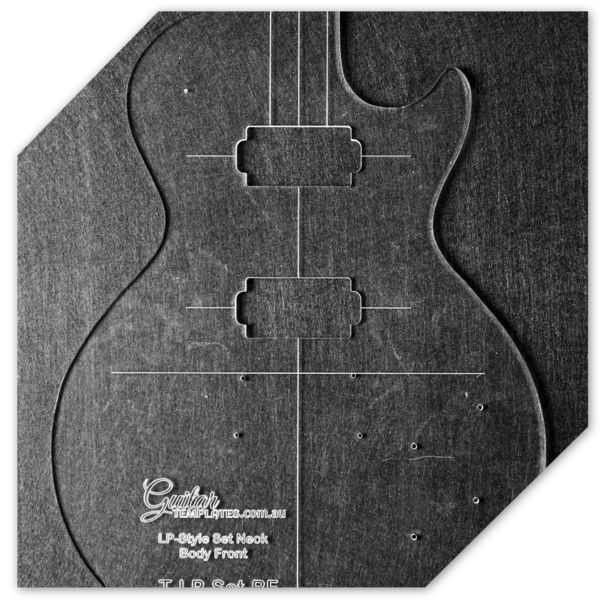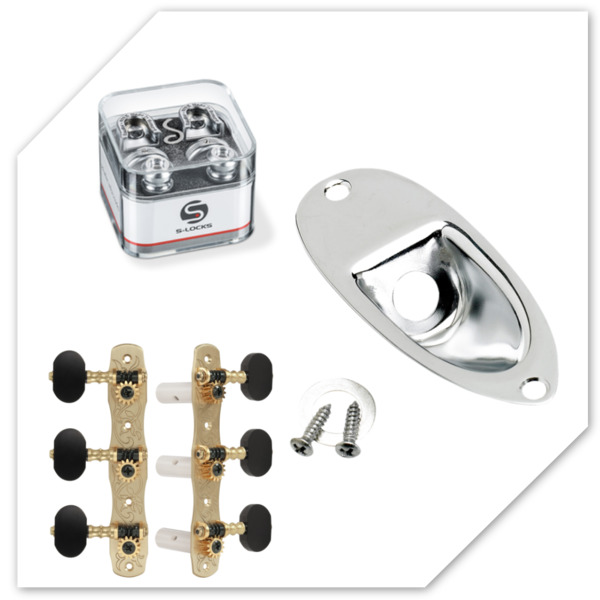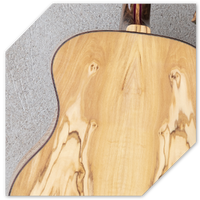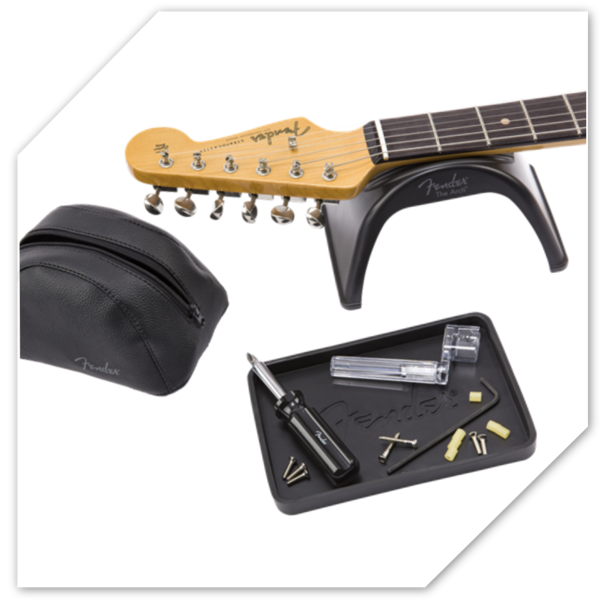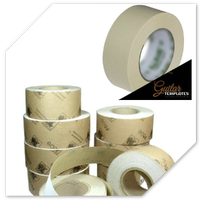Picking the right sound
Author: Kevin M Date Posted:16 January 2025
The Ideal Timbers for Crafting an Acoustic Guitar
A Guide for Music and Wood Enthusiasts. When it comes to crafting an acoustic guitar, the type of wood you choose isn’t just about aesthetics; it’s about sound, durability, and the overall character of the instrument. Each part of a guitar plays a unique role, and the choice of timber for each component significantly impacts the tone, the projection of the sound, and of course, the playability. Let’s discuss the best wood choices for each part of an acoustic guitar and explore why they’re ideal.
1. The Soundboard (Top)
The soundboard is the heart of the guitar’s tone. This is where the magic happens, as it amplifies the vibrations from the strings. (note: Bracing makes a big difference here but thats another topic)
-
Ideal Timbers:
-
Spruce (Sitka, Engelmann, Adirondack): Spruce is one of the most popular choices and for a good reason, known for its lightweight yet strong properties. Sitka spruce delivers a bright, balanced tone with excellent sound projection, while Adirondack spruce provides a punchy and dynamic range ideal for bluegrass and other high-energy styles.
-
Cedar: Cedar is softer than spruce and produces a warm, rich, and resonant tone. It’s particularly loved by fingerstyle players for its responsiveness to light touch.
-
These timbers are chosen because they’re responsive and efficient at converting string vibrations into sound. They also age beautifully, enhancing your tone over time.
2. The Back and Sides
The back and sides of the guitar shape the resonance and depth of the sound, acting as a reflective chamber.
-
Ideal Timbers:
-
Rosewood (Indian, Brazilian): Rosewood offers deep bass, sparkling highs, and complex overtones. Brazilian rosewood is highly prized for its tonal richness.
-
Mahogany: Mahogany delivers a warm, focused sound with more midrange emphasis. It’s perfect for blues and folk styles.
-
Maple: Known for its clarity and bright tone, maple is often used in guitars designed for stage performances.
-
The density and grain structure of these woods contribute to their ability to produce rich, resonant sounds while enhancing the guitar’s visual appeal.
3. The Neck
The neck affects playability and stability, as well as contributing to the guitar’s overall tone.
-
Ideal Timbers:
-
Mahogany: Mahogany is a popular choice for necks due to its strength, stability, and warm tonal contribution.
-
Maple: Maple is another excellent option, offering brightness and a smooth feel, often used for its aesthetic appeal.
-
These woods are chosen for their stability and resistance to warping, ensuring the neck remains straight and playable over time.
4. The Fingerboard
The fingerboard is where your fingers do the most work, so it needs to be both durable and smooth.
-
Ideal Timbers:
-
Ebony: Ebony is dense and smooth, making it a favorite for its silky feel and durability. It also enhances brightness in tone.
-
Rosewood: Rosewood fingerboards offer a slightly warmer tone and a more tactile feel compared to ebony.
-
These woods are hard wearing and resistant to constant finger and string contact, ensuring longevity and a comfortable playing experience.
5. The Bridge
The bridge transmits string vibrations to the soundboard, playing a vital role in the guitar’s sound and sustain.
-
Ideal Timbers:
-
Ebony: Ebony is favored for its hardness and tonal clarity.
-
Rosewood: Rosewood bridges are also common, offering a balanced tonal response.
-
Hard, dense woods like ebony and rosewood ensure efficient energy transfer from the strings to the soundboard, maximizing sustain and resonance.
6. The Bracing
Bracing supports the soundboard and influences the overall tone and projection.
-
Ideal Timbers:
-
Spruce: Spruce is the most common choice for bracing due to its strength-to-weight ratio.
-
Lightweight yet strong, spruce bracing allows the soundboard to vibrate freely while maintaining structural integrity.
The art of building an acoustic guitar is linked heavily with the wood selection. Choosing the right wood will give your and range of tones. I love a spruce top for those the warm resonance of sounds that are bouncing off rosewood backs, but each to their own. We do know that each timber brings its own voice to the instrument. When these elements come together, they create a guitar that not only sounds incredible but also tells a story—one of nature, craftsmanship, and music.
Whether you’re a luthier, a guitarist, or simply an admirer of fine instruments, understanding the role of these timbers enriches your appreciation for the artistry behind every strum. So next time you pick up an acoustic guitar, take a moment to think about the woods that make it sing.
Good luck with your project.

